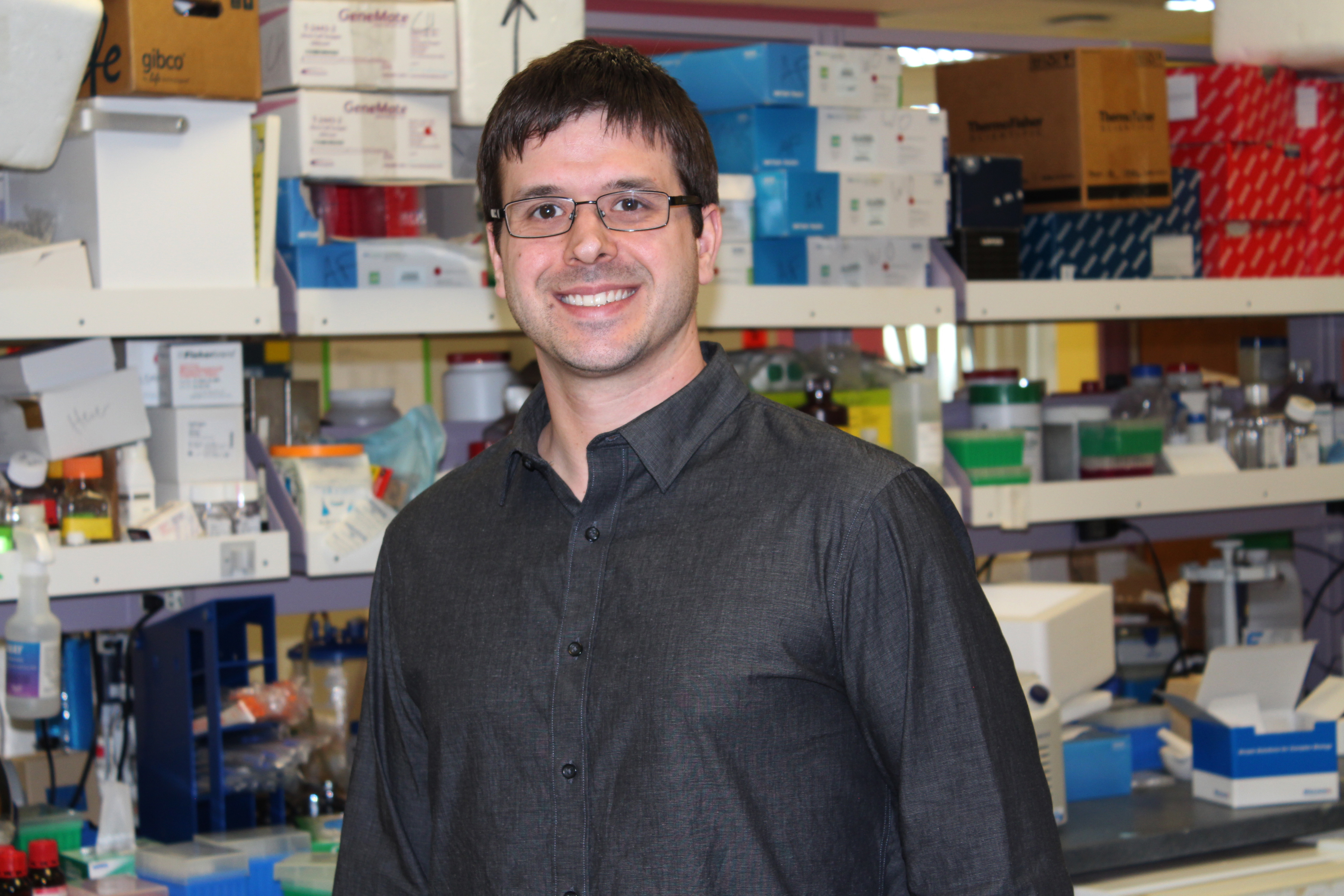
James Novak, postdoctoral associate at Children’s Research Institute, Children’s National Health System in Washington, D.C., was awarded an MDA development grant totaling $180,000 over three years to examine why exon skipping drugs are most effective at getting to muscles that are actively undergoing repair. The work, co-funded by the Hearst Foundation, is expected to help optimize the effectiveness of exon skipping therapies in Duchenne muscular dystrophy (DMD).
DMD is characterized by muscle degeneration, inflammation and fibrosis (scarring), resulting from mutations in the DMD gene that inhibit production of dystrophin protein.
Exon skipping, a promising therapeutic strategy for DMD, employs antisense oligonucleotides (one of a class of experimental therapeutic molecules designed to target genetic instructions at the RNA stage) to permit the production of shortened but partially functional dystrophin protein.
Novak and colleagues have shown that exon skipping drugs are best able to get into muscle cells that are undergoing repair. Now the team will investigate muscle regeneration and inflammation as therapeutic targets to improve delivery of exon skipping drugs. Investigation of antisense delivery into different mouse models with differing pathologies is expected to delineate factors and define mechanisms that regulate exon skipping.
Please describe your current research in DMD.
Exon skipping is a promising therapeutic strategy for DMD. It employs antisense oligonucleotides to exclude disruptive sections of DNA called exons, thus permitting synthesis of a truncated dystrophin protein. However, there are some remaining challenges to this approach, including inefficient uptake of drug into muscle cells and incomplete restoration of dystrophin expression.
Understanding the mechanisms that impinge on drug delivery is crucial to improving their efficacy and advancing next generation therapies.
Our recent work has identified how dystrophic pathology, specifically muscle regeneration and chronic inflammation, contributes to PMO uptake by dystrophic muscle fibers. (Part of what makes up the antisense oligonucleotide, the phosphorodiamidate morpholino oligomer, or PMO, is the “backbone” to which the synthetic segment of RNA is attached.)
Now, we will further investigate muscle regeneration and inflammation as therapeutic targets to improve delivery of exon skipping drugs. Investigation of antisense delivery into different dystrophic mouse models with differing pathologies will delineate these aspects of pathology and define mechanisms that regulate different exon skipping chemistries. Additionally, evaluation of exon skipping during satellite cell-mediated muscle growth compared to pathology-associated regeneration will identify new factors specific to myogenic development that could improve this therapy in young DMD patients. This comprehensive experimental design will clarify the features of disease pathology that contribute to efficient delivery and efficacy of leading antisense agents in order to improve this promising therapeutic strategy for Duchenne.
What inspired you to study DMD?
My desire and motivation to pursue a research career investigating therapeutic interventions for Duchenne muscular dystrophy was due in large part to the impact this devastating disease has had on my wife and her family, as she tragically lost her brother to Duchenne and later found out she was also a genetic carrier for the disease.
I take a tremendous amount of pride in my research and hope to translate my current discoveries into significant therapeutic advancements for those living with Duchenne.
What is the expected outcome of this research?
Our group has uncovered strong evidence that the extent of muscle regeneration and the associated inflammation define the therapeutic response of antisense drugs and therefore provide an explanation for the clinical variability following treatment. Our continued investigations will define the molecular characteristics of differentiating satellite cells which permit efficient drug delivery into dystrophic myofibers in order to discover therapeutic targets to improve this promising approach to the treatment of DMD.
Why is it important that MDA continue to fund research in DMD?
The current status of exon skipping development and recent approval of morpholino antisense for the treatment of DMD necessitates the continued investigation of the cellular and molecular mechanisms which define and regulate the clinical response in patients in order to further improve exon skipping strategies and accelerate exon skipping drug development in the future.
What do you feel people impacted by DMD can have the most hope about with respect to research right now?
Exon skipping is a promising therapeutic approach for the treatment of genetic diseases and has developed rapidly in recent years. However, one of the challenges is finding ways to improve the efficiency and accuracy of exon skipping drug delivery. My research is ultimately aimed at discovering the specific factors that regulate the delivery of these agents in order to optimize this approach and improve the clinical benefit for DMD patients.
Does your work have any potential implications for other disease fields?
The therapeutic strategy of exon skipping is currently being explored for a number of neuromuscular diseases, including spinal muscular atrophy, myotonic dystrophy and facioscapulohumeral muscular dystrophy. Defining the factors that regulate antisense delivery and exon skipping in dystrophic muscle may translate to different neuromuscular diseases, which would significantly improve the development of this therapeutic approach.
To learn more about how MDA research is accelerating treatments and cures for DMD, please visit mda.org.
